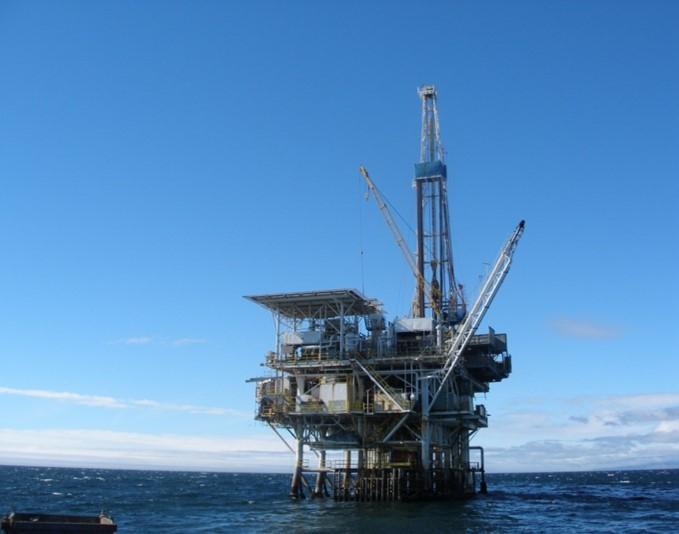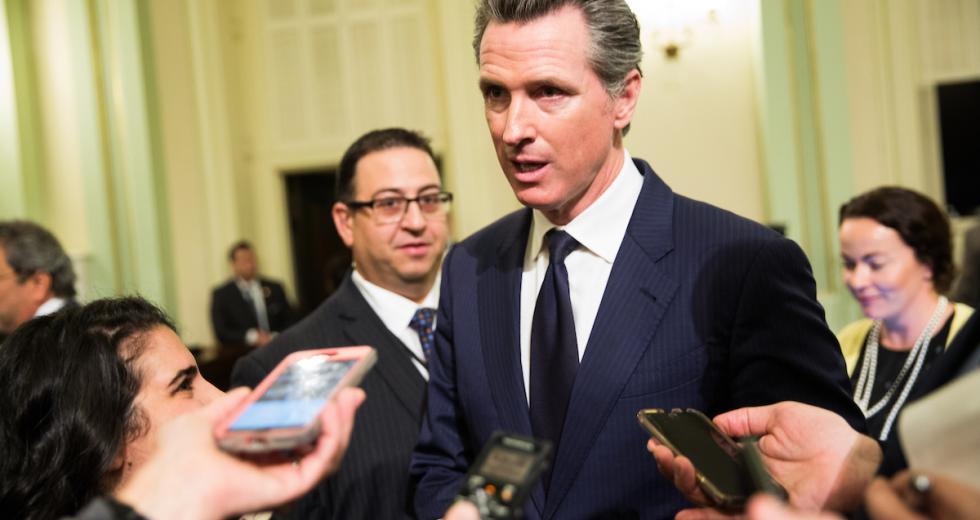It’s been nearly three years since an oil pipeline ruptured in Santa Barbara County, coating seven miles of beaches with crude oil and killing dolphins, birds and sea lions.
Area parks and fisheries have since re-opened. The pipeline has not, and the company that owns it is under criminal indictment. But the financial impacts of the 2015 Refugio oil spill continue to wash up in California.
The latest example: State lawmakers are considering an unprecedented request to spend more than $100 million in taxpayer money to dismantle two offshore oil-drilling facilities—a platform connected to the ruptured pipeline and a man-made island in nearby Ventura County—because the oil companies that were leasing the sites went bankrupt last year.
“Just because they decided to walk away doesn’t mean that we can walk away,” said state Sen. Hannah-Beth Jackson, a Democrat from Santa Barbara.
“So right now the state is holding the bag.”
It’s too soon to say if the situation is an aberration or a sign of things to come. California has a long history as a major oil-producing state but has more recently embraced environmental policies that require a shift away from petroleum. The Southern California coast is dotted with 31 oil platforms and artificial islands, some of which date back to the 1950s and are in poor condition. The state expects many to be decommissioned in the coming decades as they reach the end of their productive lives.
Oil companies accept responsibility to plug wells and return the ocean to its natural state when they enter into leases with the state to drill. The current proposal for taxpayers to foot the bill illustrates what happens when the companies can’t do it.
California officials plan to decommission Platform Holly, which
is in state waters off of Santa Barbara. Photo by the State Lands
Commission.

State officials are asking for $50.5 million to plug and abandon wells at Rincon Island in Ventura County, whose owner declared bankruptcy after being charged with numerous safety violations and a state of disrepair. And they are seeking $58 million to shutter the rig known as Platform Holly in Santa Barbara County, which has been idle since the pipeline owned by Plains All American Pipeline ruptured in 2015 and then shut down, leading Venoco, the company that was leasing the platform, to go bankrupt. In both cases, those costs would cover just the first phase of dismantling—the projects would require more money for the decommissioning stage, likely beginning in 2020.
California is staring at the enormous cost of shuttering these rigs as the federal government proposes expanding offshore drilling. It’s an epic philosophical clash: The Democratic-led state government has advanced policies to promote clean energy and reduce the use of petroleum, including a ban on new leases to drill in state waters. On the other hand, the Republican administration of President Donald Trump has embraced the fossil fuel economy and begun the process of opening the U.S. coastline to oil and gas drilling in federal waters.
The federal government is holding public meetings in each state where it seeks to expand offshore drilling. California’s will be Feb. 8 in Sacramento.
The state controls waters for the first three miles from the coast. While it can’t control what happens in federal waters beyond that, it can thwart expansion there by making it difficult to transport oil through the state waters that lead to the shore.
For environmentalists, the newly revealed state cost of decommissioning oil platforms when the responsible companies go bankrupt is reason to be wary.
“It’s the most clear example of the cost that is passed on to taxpayers,” said Marce Gutierrez-Graudins, director of Azul, a San Francisco-based ocean conservation advocacy group. “This is a very direct line of how an oil spill is literally costing us, still, years later.”
The request for public funds to close up the drilling sites is laid out in a 10-page document from California’s State Lands Commission, the state agency charged with managing oil and gas resources. It describes potentially dire consequences of leaving the facilities in the ocean: “Failure to secure and properly plug and abandon the… wells could result in significant harms to public health and safety, and damage to the marine and coastal environment.”
The deteriorating rigs could cause oil spills or emit lethal levels of poisonous gas, the document says—creating a massive financial and legal risk because the state government would be liable.
“It is vital to take immediate steps to mitigate the potential harms from the facilities,” the State Lands Commission argues.
The money requested—$108.5 million over three years—is a small fraction of the $190 billion state budget Gov. Jerry Brown has proposed for new fiscal year. Still, it’s nearly as much as the state spends to educate 10,000 school children for a year.
“This is serious stuff. That’s why we’ve requested these dollars from the state—not because we don’t think they’d be better used for other purposes, but because we have to,” Lt. Gov. Gavin Newsom, who chairs the State Lands Commission, said in an interview.
“In the absence of those investments, the spill costs and the cleanup costs would be so staggering.”
Newsom, a Democrat who is running for governor, said he’s confident the state will eventually get reimbursed. It’s seeking payment through bankruptcy court from Venoco, the company that leased Platform Holly most recently, and also pursuing reimbursement from ExxonMobil, which leased the platform until 1997.
Venoco declined, through a spokesman, to comment. ExxonMobil disputes how much responsibility it bears, but a company spokeswoman said it “will continue to work closely” with California officials.
“The final determination of liability and financial responsibility has yet to be settled,” spokeswoman Julie King said by email.
State officials are also seeking to recover some of the costs from a bond Venoco secured as part of its lease. But the bond is worth just $22 million—a fraction of the cost to decommission the platform.
By contrast, when the United States government leases land for oil drilling in federal water, it requires a level of bonding that covers the cost of decommissioning, said John Romero, a spokesman for the federal Bureau of Ocean Energy Management.
Venoco was leasing two platforms in federal water off California at the time it went bankrupt last year. Since then the federal government has required Chevron, which previously held the leases to the platforms, to take over responsibility for decommissioning them.
“There was absolutely no burden to the taxpayer on this,” Romero said.
Newsom said he’s realized that the State Lands Commission needs to require bigger bonds on oil leases. Many of the bonds were set decades ago and never updated. Now the commission is working to re-negotiate bond levels on other leases.
“Our eyes were not wide open in terms of assessing the true cost of shutting these things down when we originally bonded these leases, and as a consequence these costs are astronomical,” Newsom said. “We are definitely increasing these bonds and making sure we don’t make these mistakes.”
CALmatters.org is a nonprofit, nonpartisan media venture explaining California policies and politics.



